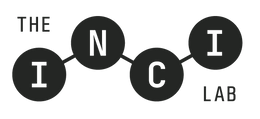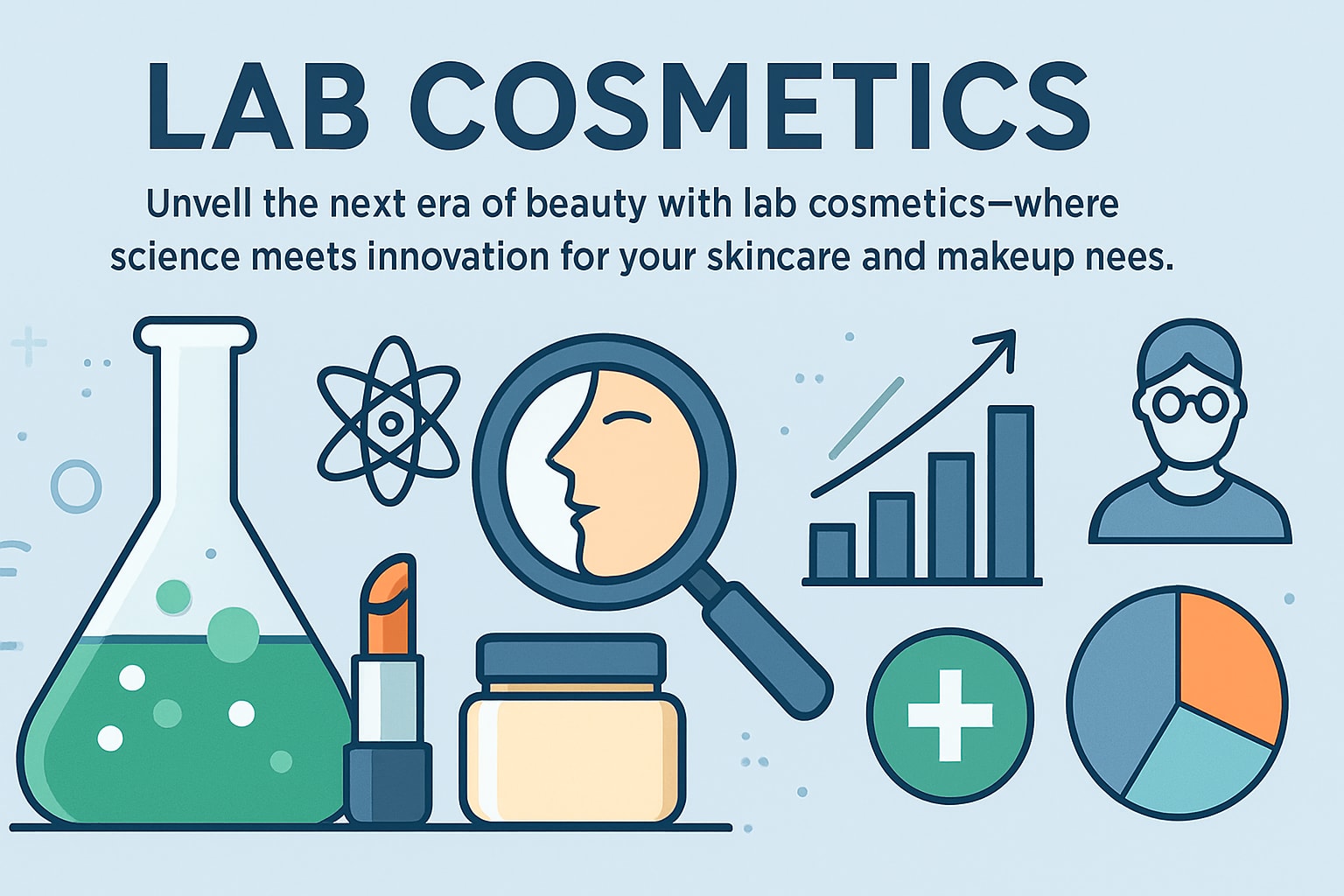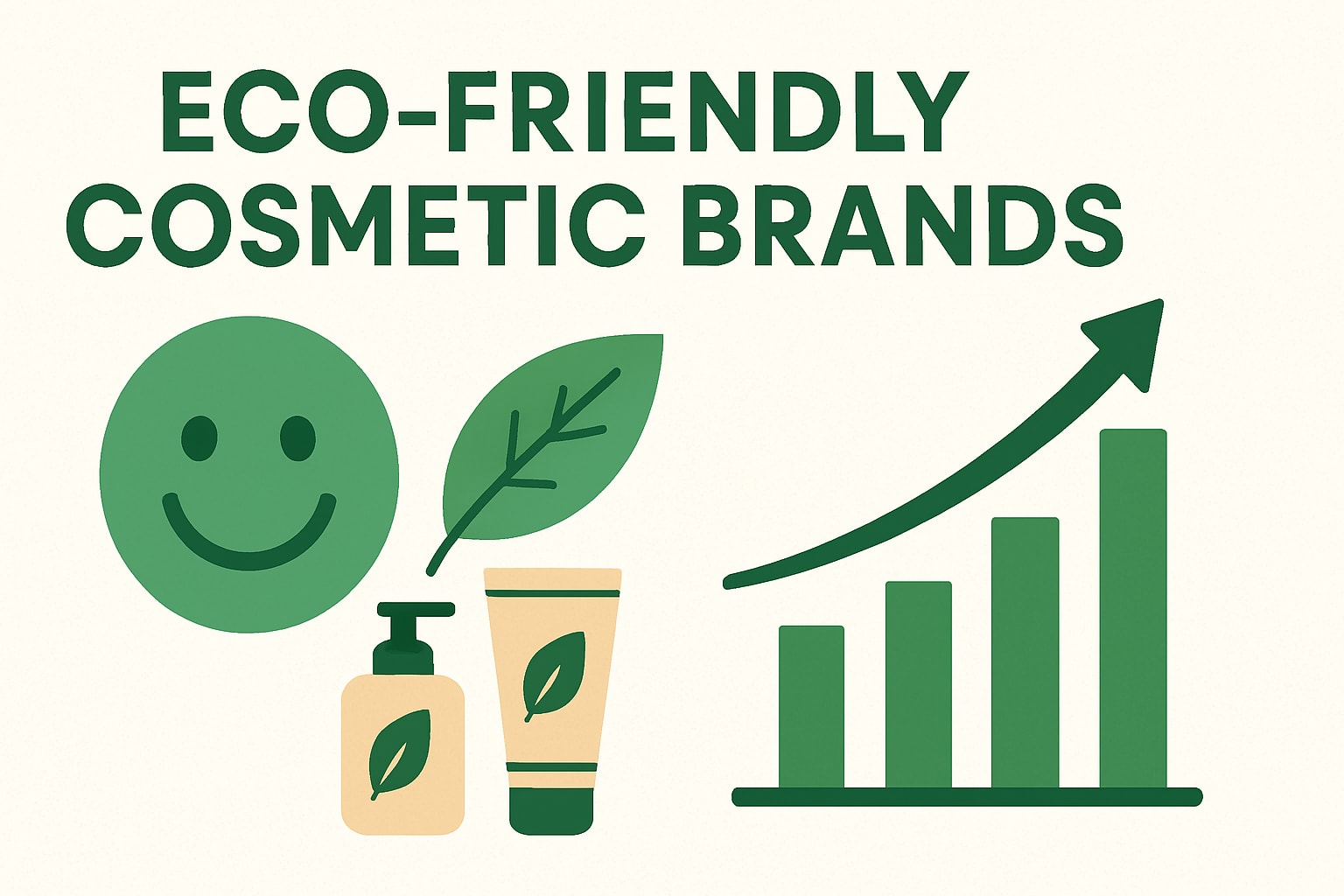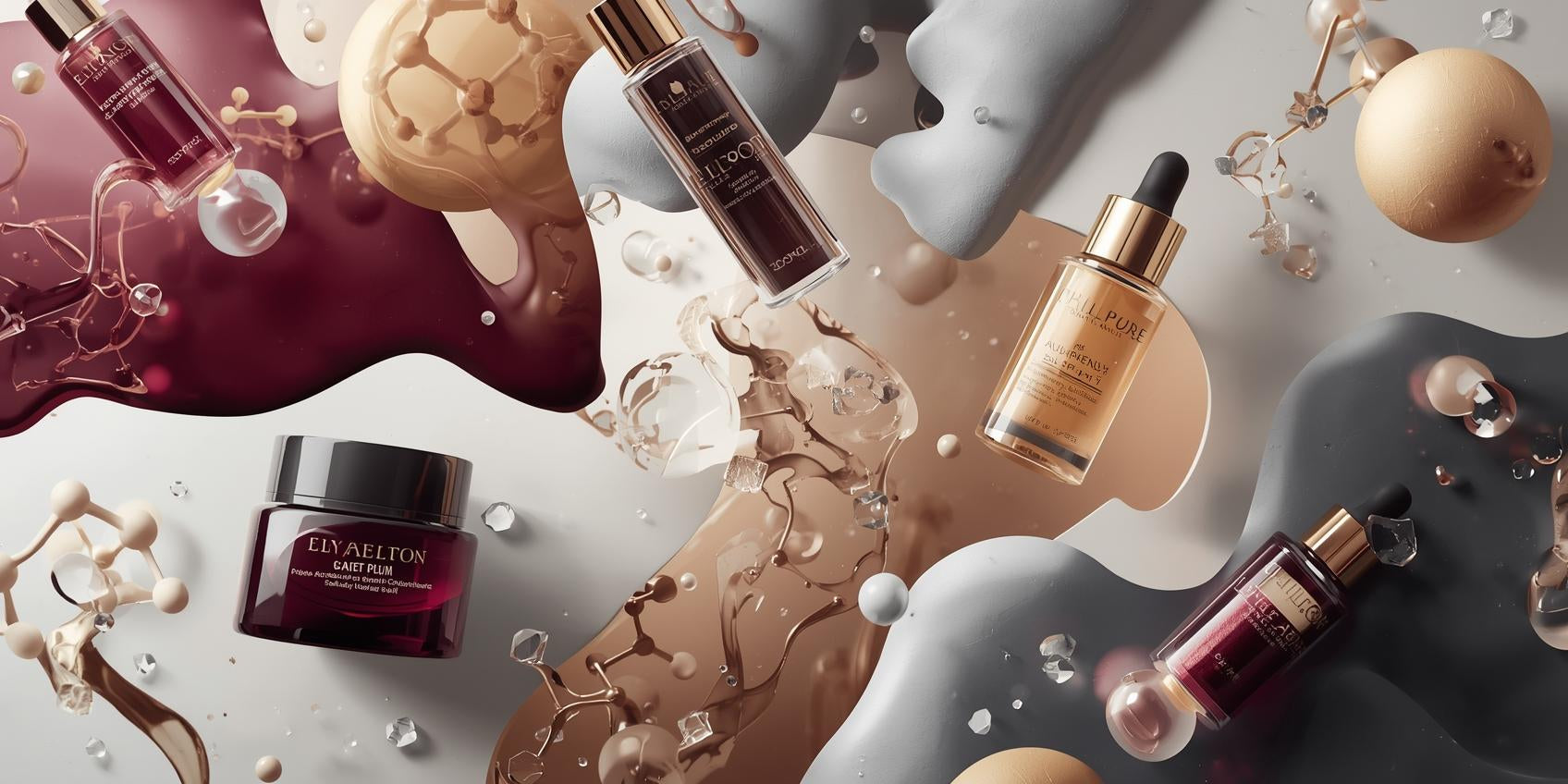The cosmetics industry is evolving at an unprecedented pace, fueled by consumers who crave the next breakthrough. Innovation is no longer optional for brands aiming to stay relevant.
This article delves into the most transformative innovations in cosmetics shaping 2025. We examine what is driving these changes and what they mean for everyone in the beauty ecosystem.
Brands, formulators, and consumers all have much to gain from understanding these shifts. Staying informed is key to finding cutting-edge solutions that meet modern demands.
We will highlight seven breakthrough innovations, offering actionable insights into the future of beauty and the technologies set to redefine the industry.
The Driving Forces Behind Cosmetic Innovation in 2025
The landscape of innovations in cosmetics is transforming at an unprecedented pace. Multiple forces are converging to reshape how products are created, marketed, and consumed. Understanding these drivers is vital for brands aiming to stay ahead. From conscious consumerism to scientific breakthroughs, each factor plays a distinct role. For a deeper dive into the trends fueling these changes, explore the 2025 global beauty trends shaping the industry.

The Rise of Conscious Consumerism
A major catalyst for innovations in cosmetics is the surge in conscious consumerism. Modern shoppers seek full transparency about ingredients, sourcing, and manufacturing processes. Social media and beauty influencers amplify these expectations, pushing brands toward ethical commitments.
Demand for cruelty-free, vegan, and sustainable products continues to soar. Consumers are scrutinizing labels and supporting brands that align with their values. This shift is fueling the creation of cleaner, safer, and more responsible formulas. As a result, innovations in cosmetics now prioritize both efficacy and ethics.
Advances in Cosmetic Science and Technology
Cutting-edge science is revolutionizing how innovations in cosmetics come to life. The integration of biotechnology, nanotechnology, and artificial intelligence is setting new standards for performance and personalization.
AI-powered skin analysis tools and smart devices are enabling tailored product recommendations. Scientific breakthroughs are also enhancing ingredient efficacy and safety. These advancements allow brands to deliver results that are both measurable and meaningful. The rapid pace of technological evolution is setting the stage for the next generation of beauty solutions.
Regulatory and Environmental Pressures
Stricter regulations are prompting brands to rethink their approach to innovations in cosmetics. Governments worldwide are imposing tighter controls on ingredients, labeling, and packaging. The push for eco-friendly, biodegradable, and recyclable materials is now a business imperative.
Surveys indicate that over 60 percent of consumers prefer brands with sustainable practices. Regulatory changes are accelerating the adoption of green chemistry and circular packaging. As a result, brands must balance compliance with the drive to innovate responsibly.
Shifting Demographics and Globalization
Globalization and shifting demographics are expanding the reach of innovations in cosmetics. Growth in regions like Asia-Pacific, Latin America, and Africa is opening new markets and inspiring new product formats. Customization for diverse skin tones, hair types, and cultural preferences is on the rise.
Gen Z and Millennials are leading the charge for inclusivity and authenticity. Their values are influencing product development and marketing strategies across the industry. Brands that adapt to these demographic shifts are better positioned to capture emerging opportunities.
| Driving Force | Key Impact on Innovations in Cosmetics |
|---|---|
| Conscious Consumerism | Demand for transparency and ethics |
| Science & Technology | Enhanced personalization and efficacy |
| Regulations & Environment | Sustainable materials and compliance |
| Demographics & Globalization | Inclusive, diverse product offerings |
7 Breakthrough Innovations in Cosmetics to Watch in 2025
The beauty world is entering a new era, powered by remarkable innovations in cosmetics. As consumer expectations shift and technology advances at lightning speed, brands and formulators face fresh challenges and opportunities. In 2025, these seven breakthrough innovations in cosmetics are set to reshape routines, elevate standards, and inspire new levels of creativity. Let’s explore how each trend is driving transformation and what it means for the future of beauty.
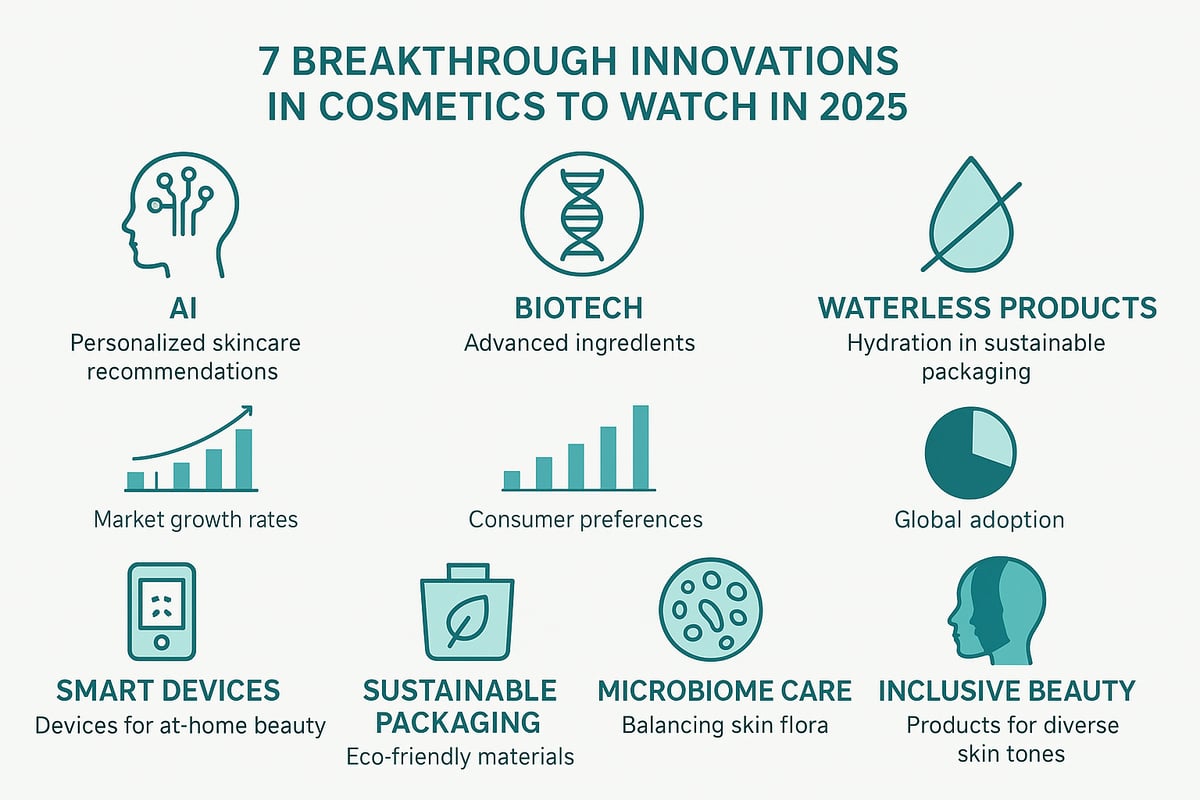
1. AI-Driven Personalized Skincare Solutions
Artificial intelligence is revolutionizing the way consumers approach skincare. By leveraging advanced algorithms, brands now offer hyper-personalized recommendations based on skin type, lifestyle, and environmental factors.
Smartphone apps and smart mirrors can scan the skin, detect concerns, and suggest tailored products within seconds. Devices like L'Oréal’s Perso blend serums, creams, and even lipstick on demand, delivering a truly bespoke experience. These innovations in cosmetics drive not only efficacy but also sustainability, as consumers purchase only what they need.
The benefits are clear: increased accuracy in product selection, reduced waste, and greater consumer satisfaction. However, challenges persist. Data privacy remains a top concern, and ensuring the accuracy of AI assessments is critical for building trust. Adoption rates also vary across different markets.
According to industry forecasts, the personalized beauty market is projected to reach $12.2 billion by 2025. This rapid growth underscores the influence of AI-powered personalized skincare solutions on the future of innovations in cosmetics. As technology becomes more accessible, brands that embrace AI will set new standards for customization and engagement.
2. Biotechnology-Engineered Active Ingredients
Biotechnology is unlocking a new generation of safe, potent, and sustainable cosmetic ingredients. Through lab-based processes, scientists are now able to produce peptides, probiotics, and plant stem cells without the environmental toll of traditional agriculture.
One standout example is Geltor’s vegan collagen, which allows brands to formulate high-performance anti-aging products while avoiding animal-derived ingredients. This approach aligns with consumer demand for cruelty-free, ethical options and reduces the pressure on rare botanical resources.
Innovations in cosmetics using biotech actives offer several advantages. These ingredients can be engineered for enhanced efficacy, consistency, and safety. Sustainability is another major win, as biotech processes often require less land, water, and energy.
Market analysts expect biotech actives to grow at a 9% compound annual rate through 2025. Despite this momentum, consumer education is crucial. Many buyers are unfamiliar with the science behind these ingredients, and regulatory approval processes can be lengthy. Still, biotechnology stands at the forefront of innovations in cosmetics, offering limitless potential for brands seeking to differentiate their products.
3. Waterless and Solid Formulations
As sustainability climbs the beauty agenda, waterless and solid formulations are gaining traction. These innovations in cosmetics eliminate water from products, reducing their environmental impact and boosting shelf life.
Brands now offer solid shampoos, cleansers, and serums that are lightweight, travel-friendly, and require minimal packaging. The appeal to eco-conscious consumers is strong, as waterless products help lower carbon footprints and decrease shipping emissions.
Benefits extend beyond sustainability. Waterless formats are less prone to contamination, often require fewer preservatives, and deliver concentrated results. Market data shows waterless beauty is projected to grow 13% annually, signaling a shift in both brand strategy and consumer habits.
However, challenges remain. Achieving the right texture and user experience requires significant formulation expertise. Some consumers may need guidance on how to use these new formats effectively. Nevertheless, waterless and solid innovations in cosmetics are redefining product design and environmental responsibility for 2025.
4. Smart and Connected Beauty Devices
Technology is bringing professional-grade skincare into the home with a new wave of smart and connected devices. These innovations in cosmetics combine hardware, sensors, and mobile apps to deliver personalized treatments and real-time feedback.
At-home devices such as the Foreo Luna and Neutrogena Skin360 provide skin analysis, cleansing, and anti-aging therapies tailored to individual needs. Many devices sync with apps, allowing users to track progress, tweak routines, and receive recommendations.
The benefits are impressive. Consumers enjoy spa-like results without leaving home, and brands gain deeper insights into user behavior. Innovations in cosmetics like these foster greater engagement and loyalty.
Drawbacks include the initial investment required for devices and the learning curve for less tech-savvy users. Still, as adoption rises, connected beauty devices will become a staple for those seeking data-driven self-care solutions. Their role in the broader landscape of innovations in cosmetics is only set to grow.
5. Sustainable Packaging Innovations
Packaging is a crucial focus in the quest for greener beauty. Brands are introducing biodegradable, refillable, and recyclable solutions that minimize waste and meet evolving regulations.
Materials such as mushroom-based composites, recycled plastics, and paper are replacing traditional packaging. Lush’s “naked” products eliminate packaging altogether, while Loop’s refill system empowers consumers to reuse containers.
Consumer demand is strong. Surveys indicate that 70% of buyers are willing to pay more for eco-friendly packaging, reflecting a shift in values. Regulatory bodies, especially in the EU, are implementing bans on single-use plastics and raising sustainability standards.
Despite enthusiasm, challenges persist. Sustainable packaging must balance durability, cost, and scalability. As more brands embrace these innovations in cosmetics, collaboration across the supply chain will be key to overcoming obstacles and delivering impactful results.
6. Microbiome-Friendly Cosmetics
The skin’s microbiome is now recognized as a cornerstone of skin health. Brands are responding with innovations in cosmetics designed to support and balance this delicate ecosystem.
Microbiome-friendly products incorporate prebiotics, probiotics, and postbiotics to nourish beneficial bacteria and strengthen the skin barrier. Gallinée’s skincare line exemplifies this trend, offering formulas that reduce irritation and promote long-term wellness.
Scientific studies show that maintaining microbiome balance can help prevent acne, eczema, and other conditions. These innovations in cosmetics are transforming how consumers view skin health, emphasizing prevention and resilience.
Education remains a barrier. Many shoppers are unfamiliar with microbiome science, and regulatory guidelines are still evolving. As research progresses, expect microbiome-friendly cosmetics to become a pillar of holistic beauty routines, driving further innovations in cosmetics.
7. Inclusive and Adaptive Beauty Products
Diversity and accessibility are redefining beauty standards. Brands are expanding their offerings to cater to all skin tones, hair types, and abilities, reflecting a more inclusive approach to product development.
Fenty Beauty’s 50-plus foundation shades set a new benchmark for inclusivity, while Guide Beauty’s adaptive packaging supports users with disabilities. These innovations in cosmetics extend beyond shade range, encompassing textures, formats, and ergonomic design.
The impact is significant. Inclusive beauty sales are up 30% year-over-year, demonstrating consumer appetite for representation and choice. Socially, these innovations in cosmetics foster confidence and self-expression among underserved groups.
However, developing truly inclusive and adaptive products can be complex and costly. Brands must invest in research, supply chain diversity, and ongoing dialogue with their customers. As the industry evolves, inclusivity will remain central to the most meaningful innovations in cosmetics.
The Role of Custom Formulation Labs in Accelerating Cosmetic Innovation
Custom formulation labs are redefining how brands approach innovations in cosmetics. By offering specialized expertise, these labs empower both emerging and established brands to swiftly adapt to new trends and consumer demands. In 2025, the ability to innovate quickly and responsibly is a distinct competitive advantage.
The INCI Lab: Pioneering Sustainable and High-Performance Formulations
Custom formulation labs like The INCI Lab play a pivotal role in driving innovations in cosmetics. They serve as innovation engines, guiding brands through every stage of product development. From initial concept to market launch, their expertise ensures formulations are not only trend-forward but also meet rigorous safety and sustainability standards.

One of the standout advantages of partnering with a custom lab is access to cutting-edge ingredient technologies. Labs now routinely develop products featuring biotech actives, waterless formats, and microbiome-friendly formulations. These approaches address rising consumer demand for clean, sustainable, and high-efficacy products. For instance, a brand aiming to launch a vegan collagen serum can leverage lab expertise to source biotech ingredients and validate performance claims.
Support is comprehensive. Labs assist with ingredient sourcing, regulatory compliance, stability testing, and packaging innovation. Many, including The INCI Lab, emphasize eco-conscious practices by prioritizing biodegradable materials and responsible sourcing. Brands maintain full intellectual property ownership, which is vital for differentiation in the crowded innovations in cosmetics landscape.
Global reach is another strength. Custom labs like The INCI Lab have experience navigating the regulatory frameworks of multiple regions, which is essential as the beauty market expands across Asia-Pacific, Latin America, and Africa. Their knowledge helps brands adapt innovations in cosmetics to diverse consumer needs and cultural preferences.
Real-world examples abound. Several award-winning brands have relied on custom labs to create first-to-market solutions, such as solid serums, probiotic skincare, and refillable packaging. For more on how custom formulation drives brand growth, see Revolutionize your brand with custom formulations.
The value proposition is clear. Custom formulation labs provide end-to-end support, technical leadership, and agile response to shifting trends. They enable brands to launch unique products that set new standards in innovations in cosmetics. For an in-depth look at how these labs foster product breakthroughs, visit Cosmetic product development insights.
In summary, the strategic partnership between brands and custom formulation labs is essential for anyone looking to lead in the future of innovations in cosmetics. The combination of scientific expertise, sustainable practices, and market agility positions brands for long-term success.
Key Challenges and Opportunities for Brands Embracing Innovation
Embracing innovations in cosmetics brings both exciting possibilities and complex challenges for brands. Navigating this landscape requires agility, strategic planning, and a deep understanding of emerging trends. Let’s explore the key obstacles and opportunities shaping the path forward for industry leaders and newcomers alike.

Navigating Regulatory Hurdles
The rapid pace of innovations in cosmetics means regulations are constantly evolving. Brands must keep up with changing requirements around ingredient safety, labeling, and environmental impact. Compliance is not optional—non-compliance can result in costly recalls or reputational damage.
To stay ahead, companies should invest in regulatory expertise and proactive monitoring of global standards. Building strong relationships with regulatory bodies can streamline approvals and reduce risks. Ultimately, anticipating changes and integrating compliance into the R&D process ensures that innovations in cosmetics can reach the market smoothly.
Scaling Sustainable Practices
Sustainability is no longer a differentiator; it is an expectation. Brands face the challenge of making eco-friendly choices throughout their supply chain, from sourcing to packaging. Innovations in cosmetics often require new materials and processes that may impact cost or scalability.
Leading brands are adopting refillable packaging, biodegradable materials, and transparent sourcing. For practical insights, explore how eco-friendly cosmetic brands are successfully implementing these strategies. Balancing performance, cost, and sustainability is key to long-term success in a competitive market.
Consumer Education and Trust Building
Consumers are more knowledgeable and discerning, especially when it comes to innovations in cosmetics. They demand transparency, science-backed claims, and clear information about product benefits and risks. Misinformation or exaggerated marketing can erode trust quickly.
Brands must prioritize honest communication and invest in educational content. Tools like virtual consultations and interactive apps can help demystify new technologies, such as microbiome-friendly cosmetics, fostering deeper engagement. Building trust is not a one-time effort—it requires consistent, transparent dialogue.
Staying Ahead of the Competition
The cosmetics industry is fiercely competitive, with trends shifting rapidly. Success hinges on continuous investment in R&D, agile product development, and close monitoring of consumer preferences. Brands that quickly adapt to innovations in cosmetics are better positioned to capture emerging market segments.
Strategic partnerships with technology providers, formulation labs, and ingredient suppliers can accelerate innovation cycles. Companies should also leverage data analytics to predict trends and personalize offerings, ensuring they remain relevant in an ever-changing landscape.
Future Outlook
Looking beyond 2025, the potential for innovations in cosmetics is vast. Advances in biotechnology, AI, and sustainability will continue to reshape the industry. Brands that foster a culture of innovation, embrace diversity, and prioritize ethical practices will lead the next wave of transformation.
Staying proactive, adaptive, and customer-centric will be essential. The future belongs to those willing to take calculated risks and invest in breakthrough solutions that redefine beauty for all.
As we've explored these seven breakthrough innovations shaping the future of cosmetics, you can see how staying ahead of the curve is essential—whether you're dreaming up your first product or looking to give your established brand a fresh edge. At The INCI Lab, we specialize in transforming visionary ideas into award-winning, sustainable formulations that truly stand out. If you're ready to create high-performance products that capture tomorrow's trends and meet today's conscious consumer demands, let's take the next step together.
Start Your Product Journey
